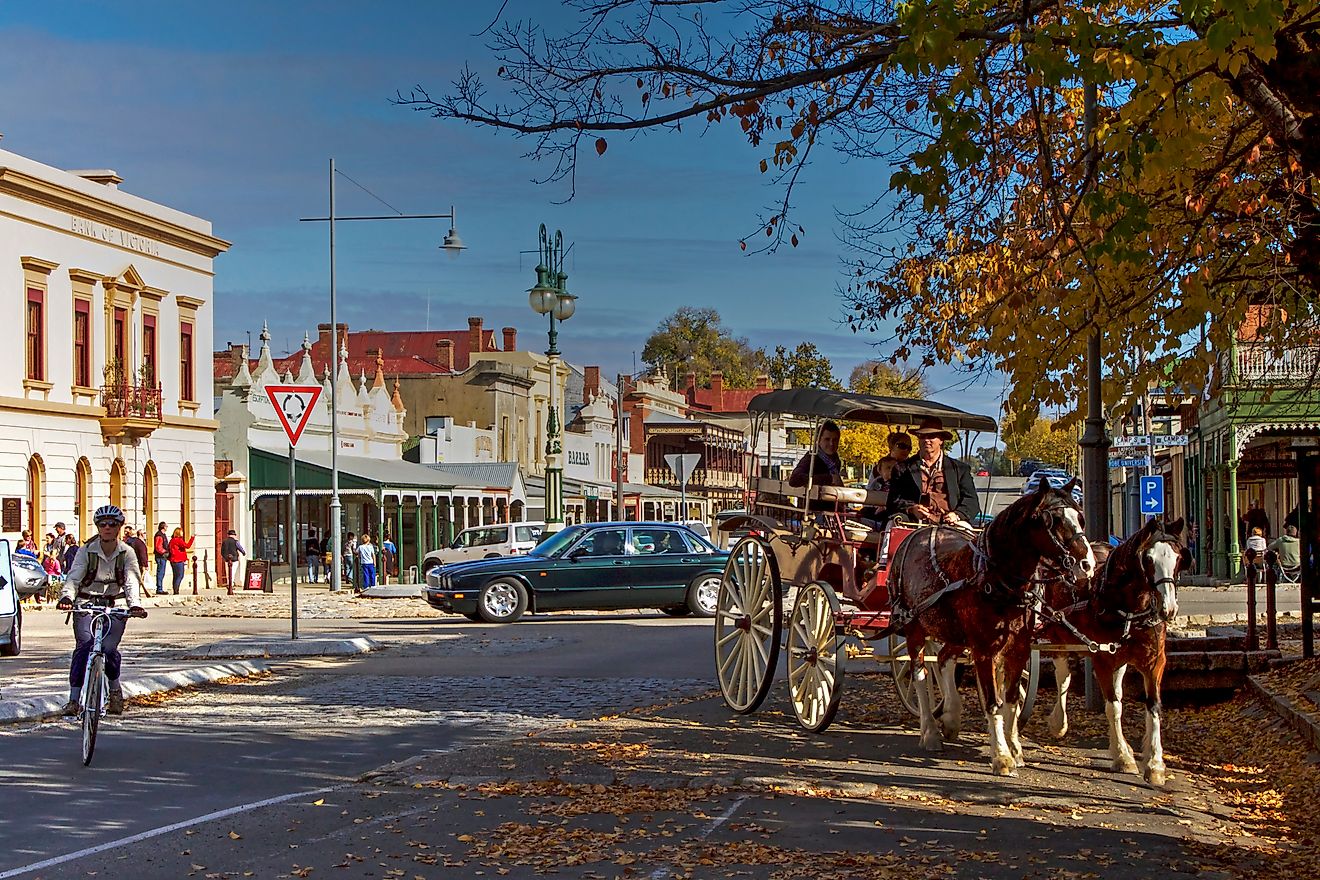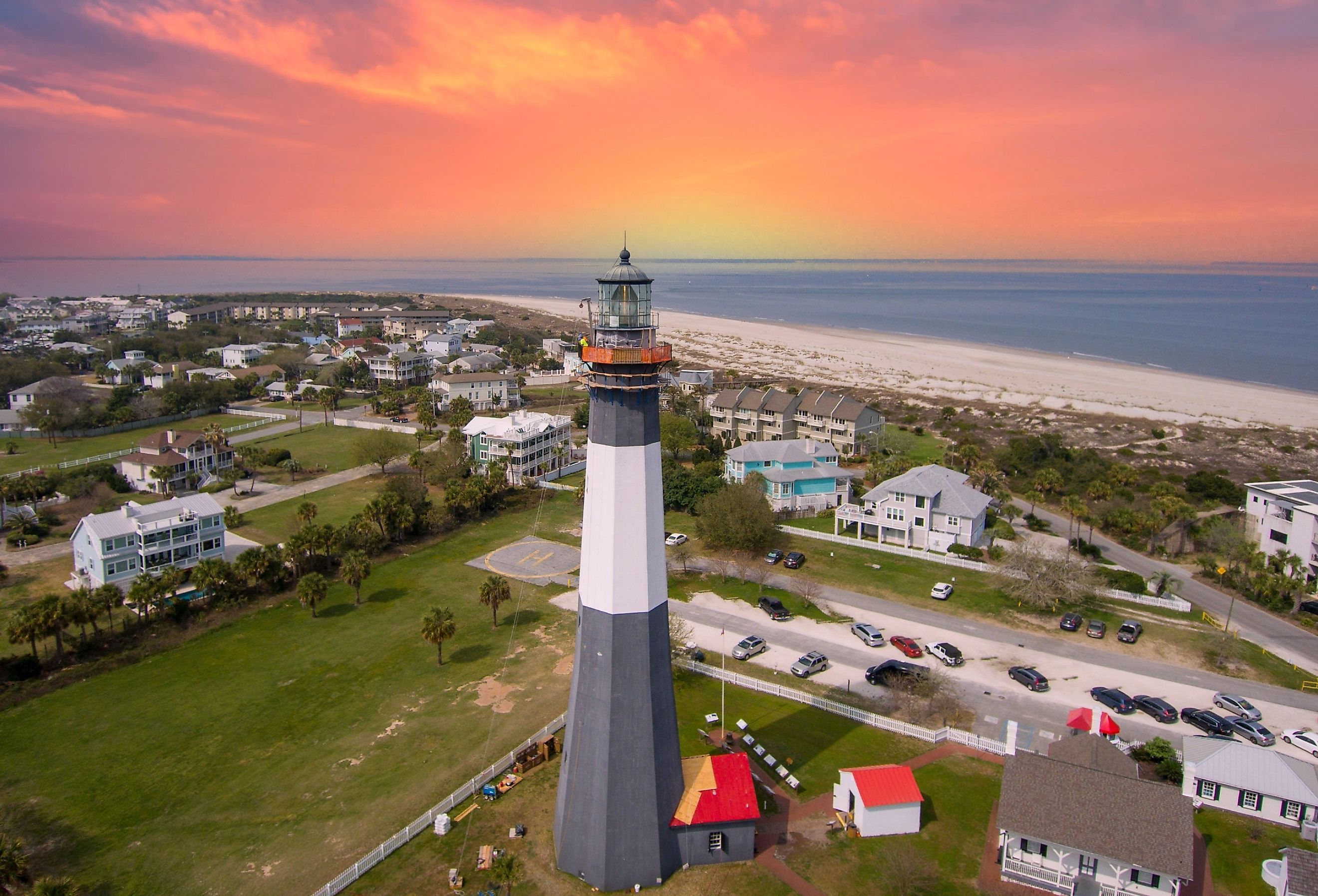
7 of the Most Charming Small Towns to Visit in Georgia
Georgia is a southeastern US state. Its capital, Atlanta, is a hub of civil rights history. Georgia's geography ranges from the Appalachian Mountains in the north to the coastal plains in the south, with a climate that varies from temperate in the uplands to subtropical along the coast. With a population exceeding 10 million, Georgia is noted for its contributions to music, literature, and the arts. Despite the prominence of Georgia's larger cities, it is often the state's smaller towns that encapsulate its true charm. These locales have a slower-paced life, significant history, and the scenic beauty of Georgia's natural landscapes.
Dahlonega
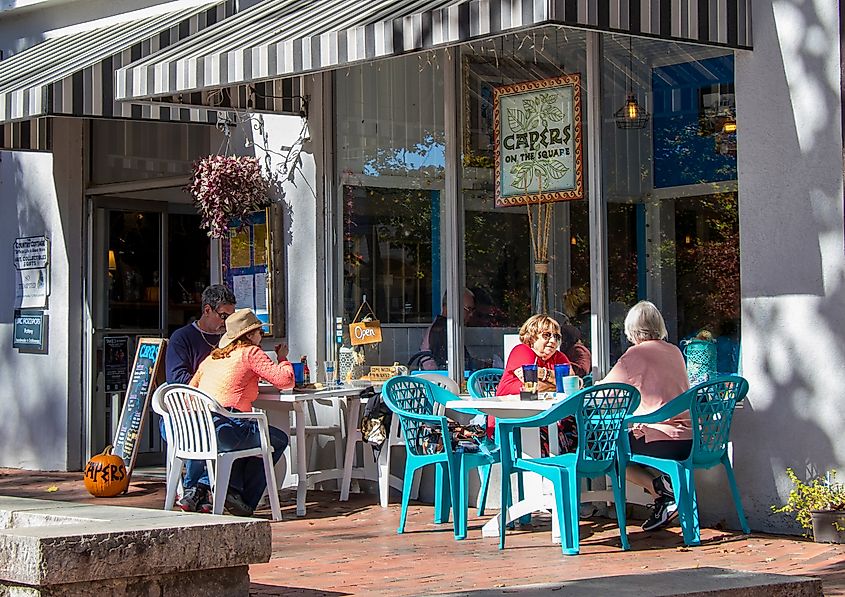
Dahlonega is in the North Georgia mountains and gained historical significance as the site of the first major gold rush in the United States in the 1820s, before the more famous California gold rush. The town's architecture is a testament to its past. Many buildings in the downtown area reflect styles from the 19th century. The surrounding landscape includes rolling hills, forests, and the Chestatee and Etowah Rivers. It hints at the geological richness that spurred Dahlonega's initial growth.
The Consolidated Gold Mine is one of the largest hard rock gold mines in Georgia. Visitors can embark on an underground tour to see the challenging conditions faced by miners over a century ago. Do not miss the opportunity to pan for gold and gemstones. Another mining attraction, the Dahlonega Gold Museum Historic Site, is located in Dahlonega's public square and has exhibits of authentic mining equipment, rare photographs, and detailed narratives. For nature lovers, the Waterfalls Trail of Lumpkin County has hikes that range from easy to moderate difficulty, making them accessible for most fitness levels. Some notable waterfalls include Cane Creek Falls, DeSoto Falls, and Amicalola Falls.
Blue Ridge

Blue Ridge, Georgia, is part of the Appalachian Mountain range, and the Blue Ridge Mountains are a backdrop to the town. Founded in 1886, Blue Ridge developed with the arrival of the Marietta and North Georgia Railroad, which connected it to larger markets and facilitated the timber and mining industries. The town's name reflects the deep blue color seen in the distant mountain ridges, attributed to isoprene released by the forests.
Embark on a journey through the Blue Ridge mountains aboard the Blue Ridge Scenic Railway. Starting from the historic depot in downtown Blue Ridge, this four-hour round-trip ride takes you along the Toccoa River through the countryside to the sister towns of McCaysville, Georgia, and Copperhill, Tennessee. A visit to Blue Ridge would not be complete without stopping by Mercier Orchards, a family-owned and operated apple orchard that has been a staple since 1943. Spread over 300 acres, it is the largest apple orchard in the Southeast. For those who love water, Lake Blue Ridge is a nearby lake, surrounded by mountains and forests. Visitors can enjoy boating, fishing, swimming, and paddleboarding.
Madison

Madison encapsulates the essence of Southern heritage and charm. Founded in 1809 and named after President James Madison, the town is situated within Morgan County and is distinguished by its exceptional collection of Antebellum architecture. Unlike many other towns in the region, Madison was spared significant destruction during General Sherman's infamous March to the Sea during the Civil War, allegedly because of its beauty. This preservation allows for an almost seamless window into the 19th-century Southern United States, with its historic district featuring over 100 antebellum homes and buildings.
Built in 1811, Heritage Hall is an example of Greek Revival architecture. Each room in this antebellum mansion is decorated to reflect the era's style and elegance. Guided tours provide insights into the house's history and the people who lived there. Just a short drive away, Hard Labor Creek State Park covers over 5,000 acres and is for hiking, biking, and horseback riding, with trails winding through hardwood forests and along creeks. The park also has a 275-acre lake for fishing, kayaking, and swimming. Housed in a restored 1895 Romanesque Revival building, the Madison-Morgan Cultural Center hosts exhibits, performances, and educational programs throughout the year, showcasing everything from fine arts and historical exhibitions to live theater and music performances.
Helen

Helen, Georgia, is a mountain town that has transformed into a Bavarian alpine village. This change occurred in the 1960s as part of a strategic move to boost the town's economy by capitalizing on its setting in the Blue Ridge segment of the Appalachian Mountains. Helen's architecture now mimics a German village, with buildings featuring south-German style facades, complete with cobblestone streets and gabled roofs. This architectural overhaul was inspired by the town's natural surroundings, which resemble the landscapes of southern Germany.
Located just north of Helen in the Chattahoochee National Forest, Anna Ruby Falls is easily accessible for visitors of all ages. The falls are formed by two creeks cascading over a cliff, creating a stunning double waterfall that can be viewed from a half-mile paved trail. Meanwhile, Charlemagne's Kingdom is a detailed model railroad exhibit that transports visitors to a miniature German landscape. The HO-scale model railway winds through a recreated German countryside, complete with castles and villages. Lastly, Unicoi State Park has trails that range from easy walks to challenging hikes. The park also features a lake where visitors can rent canoes, kayaks, and paddleboards.
Toccoa

Toccoa is located in the foothills of the Northeast Georgia mountains. The name "Toccoa" derives from the Cherokee word for "beautiful," a tribute to the landscape that defines the area. Established in 1873, the town's development was closely tied to the railroad's expansion, which facilitated the growth of Toccoa. Toccoa's geographical setting further shaped the lifestyle and economic pursuits of its inhabitants, from agriculture and textile manufacturing to tourism.
One of the tallest free-falling waterfalls east of the Mississippi River, Toccoa Falls has a 186-foot drop against a backdrop of wooded landscape. Located within the campus of Toccoa Falls College, it is easily accessible via a short, well-maintained trail. Housed in the historic Toccoa railway station, the Currahee Military Museum pays homage to the paratroopers of the 506th Infantry Regiment of the 101st Airborne Division, who trained at Camp Toccoa during World War II. The museum is filled with artifacts, photographs, and personal stories. The Currahee Mountain is a must-visit for anyone coming to Toccoa. The mountain was the training ground for paratroopers during World War II. The three-mile trek to the summit is challenging but rewarding, offering views of the surrounding countryside.
Tybee Island
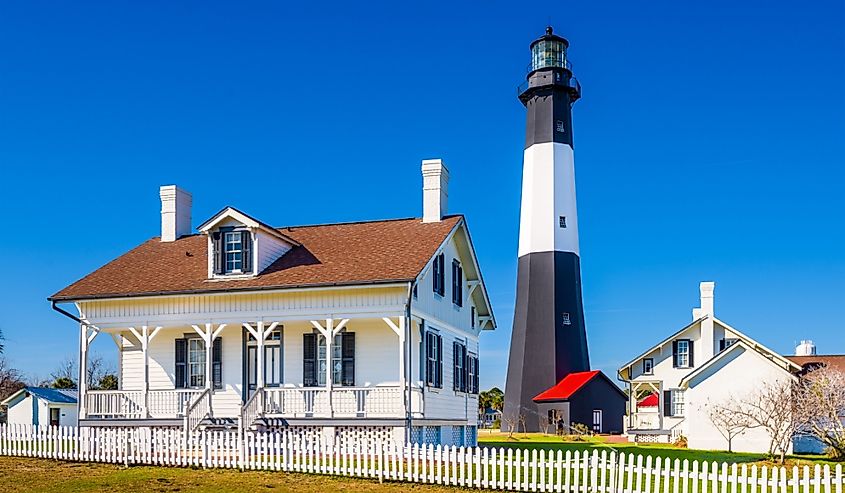
Tybee Island, Georgia, is a barrier island town located 18 miles east of Savannah, at the eastern tip of the state. It boasts sandy beaches, salt marshes, and a network of estuaries that contribute to its biodiversity. Historically, Tybee Island was a strategic coastal point since the 16th century, initially inhabited by Native Americans and later by Spanish explorers. Its name, derived from the Euchee Indian word "Tybee," meaning salt, highlights the island's natural resources.
The Tybee Island Light Station has been guiding mariners to safely enter the Savannah River for over 270 years. Visitors can climb the 178 steps to the top for a view of the Atlantic Ocean. Further, the Tybee Island Marine Science Center has interactive exhibits and programs that introduce visitors to the biodiversity of Georgia's coast. From hands-on exhibits featuring live marine creatures to guided tours that explore the beach's dune system, the center educates visitors about marine conservation. Rich in Civil War history, Fort Pulaski National Monument was a site during the Civil War, where the use of rifled cannon artillery signaled a new era in military siege tactics. Today, visitors can explore the fort, walk along its ramparts, and view the damage from the battle.
Clarkesville
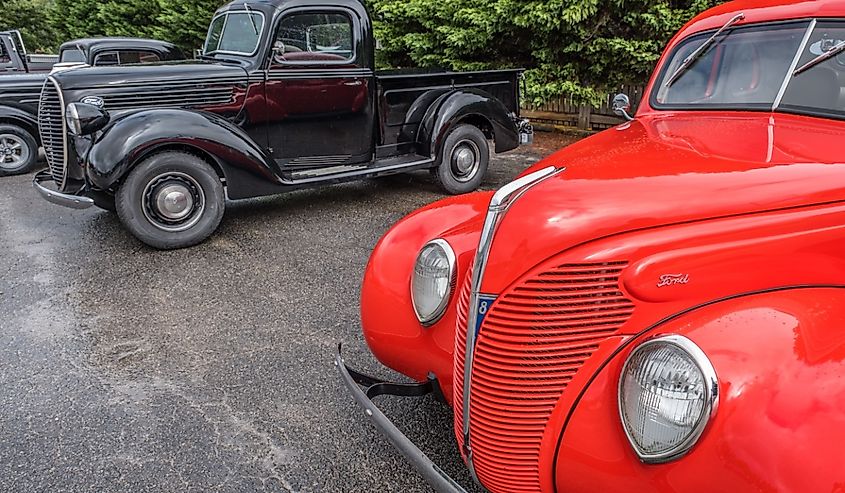
Clarkesville, established in 1821, is a northern Georgia town nestled in the foothills of the Appalachian Mountains. It is near the Chattahoochee National Forest, which frames the town. Clarkesville's history is fraught with the narratives of early settlers, agriculture, and the development of the railroad, which significantly contributed to its growth in the 19th and early 20th centuries. Architecturally, Clarkesville has a preserved historic downtown area, including antebellum, Victorian, and early 20th-century buildings.
Located in a restored 112-year-old farmhouse, Hickory Flat Pottery is a working pottery studio and gallery. Visitors can witness the process of pottery making and explore a diverse collection of handcrafted pieces, ranging from functional kitchenware to decorative art. Often regarded as one of the most picturesque waterfalls in North Georgia, Minnehaha Falls cascades down a series of rock steps, creating a tranquil sound. The Old Clarkesville Cemetery was established in the early 19th century and is the final resting place for many of the town's founders and notable figures. Visitors can take a self-guided tour, following the pathways lined with ancient oaks and time-worn gravestones.
While Georgia's cities like Atlanta are exciting urban centers, the state's small towns are for visitors looking for a charming and quiet escape. Dahlonega, with its gold mining history, and Blue Ridge, set against the Appalachian Mountains, give visitors hands-on outdoor experiences. Meanwhile, towns like Madison and Helen exemplify Georgia's architectural beauty and its ability to preserve its heritage. Georgia's smaller towns are not just stops along the way but charming destinations in their own right.






